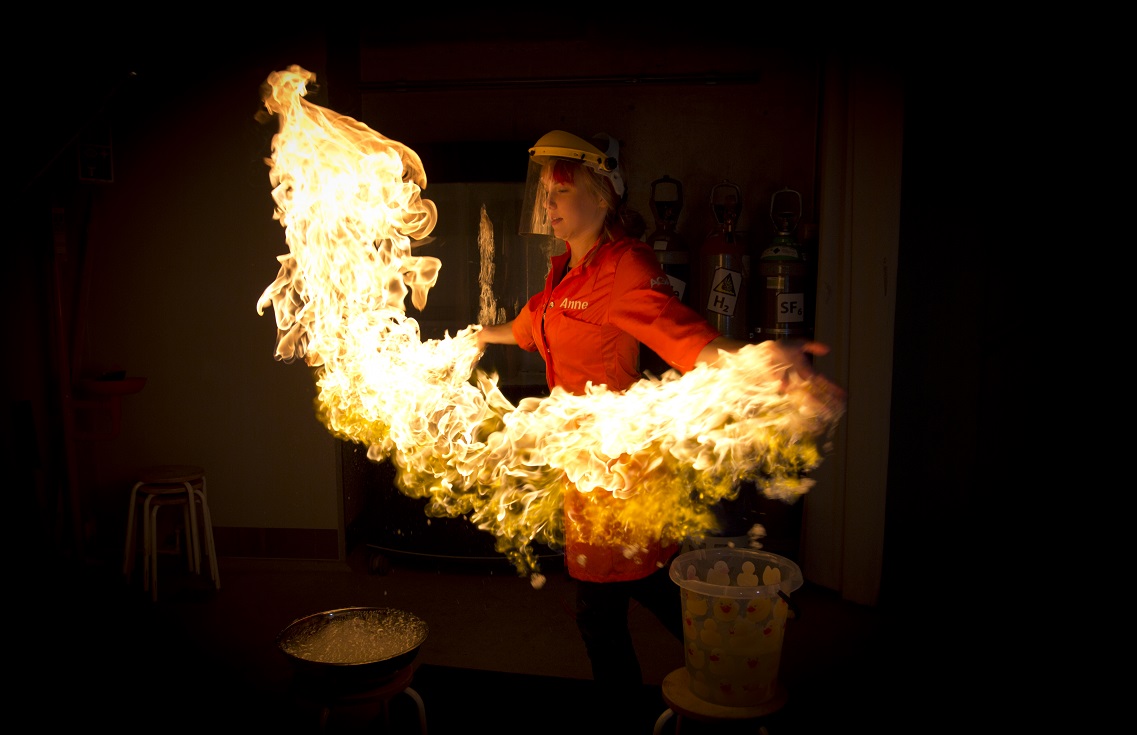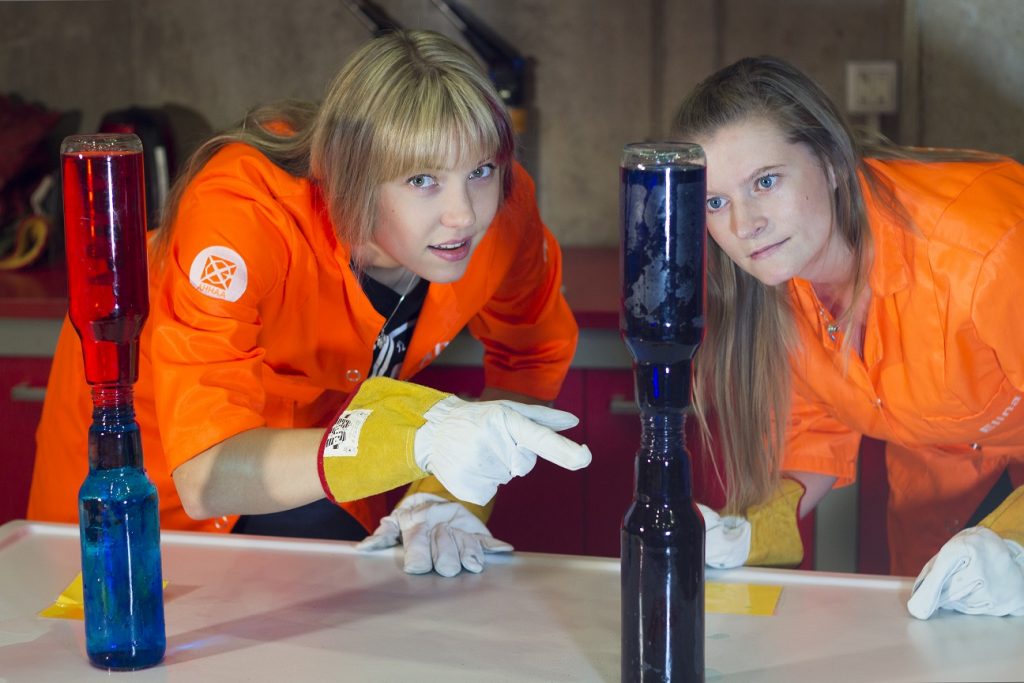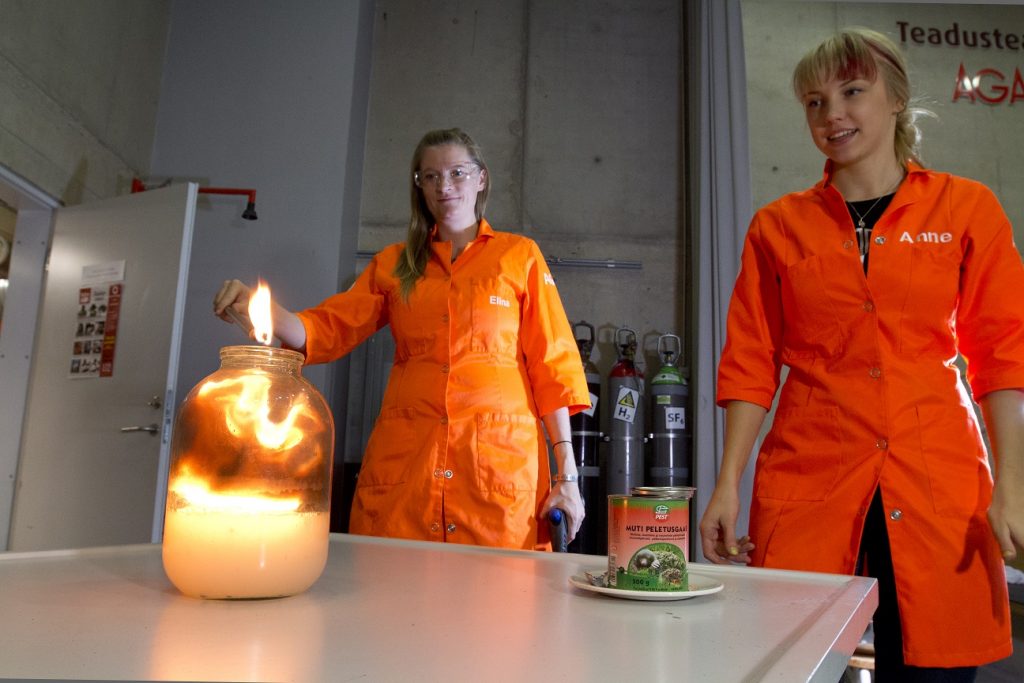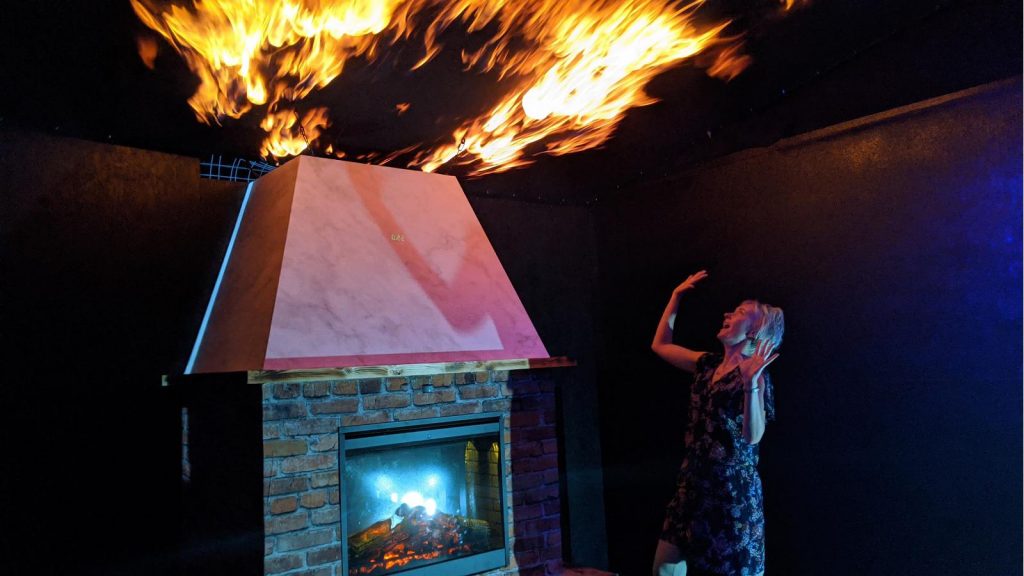
Science theater makes the viewer take a breath in astonishment
Stepping into the exhibition hall that opens to the heights, one will immediately feel how your thoughts begin to move to make room for new knowledge. This place just inspires you to try things out, try things for yourself, and gather information.
AHHAA science centre is the largest and most entertaining research center in the Baltics, whose mission is to develop a knowledge-based mindset by offering the joy of discovery. AHHAA is located in Tartu, Estonia and is also a seed for future research enthusiasts.
In addition to the large permanent exhibition, there are various temporary exhibitions and workshops. Visitors of the research center are also given an exciting science theater experience.
The Linde-sponsored science theater explains topics in physics, chemistry, biology, and psychology in simple and understandable language. Seasonal performances take place as well, for example during Christmas and Easter. The theater hall meets safety and security requirements and is designed to show explosions, test gases, and conduct space-intensive demonstrations. Linde products are primarily used in tests and experiments.

The AHHAA science theater
At the beginning of the performance, the theater hall will be filled with visitors interested in science. Expectation-anxiety reaches its maximum when the lights go out and the curtains slowly open. An industrial-looking theater stage opens before the visitors’ eyes, which by its very nature gives the impression that dangerous and powerful experiments can take place in this room.
A performance called “The Magic of Water” will be performed on the stage. It has been in AHHAA’s schedule for many years, but young and old are still fascinated by these experiments. Right at the beginning of the theater, the bright-eyed performer promises something that seems impossible – to make water by the reaction of two gases. In front of the audience, he fills the balloon with hydrogen and oxygen. The audience is asked to cover their ears, as the speaker does. Together with the audience, counting to three, the instructor lights a balloon. There is an explosion, a roar, and a slight flare can be seen. But neither the performer nor the audience become soaked in water. Did the experiment fail? No, water was formed, but only in a very small amount, and due to the heat of the reaction, the water evaporated into the room around the science theater.
Although the name of the science theater contains the word “water”, both water and fire can be seen on stage equally. The burning of various gases and the handling of these flames have fascinated spectators of science theater since the beginning. As water and fire are opposing elements, it is very enjoyable to watch the harmony of the two on stage.
One of the most attractive chemicals is on stage today as well – liquid nitrogen. It has been used on the AHHAA stage for decades, but it can still surprise and amaze people. Viewers can’t imagine a degree of cold such as -196 degrees Celsius – no one has ever felt such a temperature. However, a skilled performer can show both how dangerous this substance is as well as demonstrate the powerful and soft fog it creates on the stage of a science theater at the same time.
Although experiments with gases and various chemicals are very effective for a show, it is important for both the science theater’s performance and AHHAA, that in addition to engaging with the audience visually, they also leave the audience with new knowledge. It is also extremely important to perform the tests safely and securely. AHHAA currently has about 15 science theater-makers. Everyone is trained in the safe use of hazardous chemicals and use of protective equipment. They have also learned how to make scientific phenomena exciting and understandable to visitors of all ages.

The definite role of gases in AHHAA every day

Throughout the years, liquefied nitrogen has been used the most in science theater in AHHAA. In the past, for example, the most popular activity was to freeze the flowers and then break them into pieces. To date, a variety of nitrogen experiments have been added.
“Currently, the most used gases in science theater are oxygen, hydrogen, propane, and liquefied nitrogen. In addition, we consume methane, helium, carbon dioxide, acetylene, and nitrous oxide. These are gases that we use less often and rather in special projects. Linde gases are also used in AHHAA’s workshop, exhibition masters use oxygen to operate the laser cutter and argon for welding”, introduces Helen Järvpõld, Development Manager of the AHHAA program. “The last project is reminiscent of a summer venture, where we performed during the filming of a special for the TV-show “ÕHTU”, on the Emajõgi River. AHHAA put in a good ending performance to the series of special programs for the show. In the middle of the Emajõgi River, three 200L barrels were placed on a self-built raft. The barrels were filled with extremely explosive acetylene. The barrels were ignited by remote control, flying to a height of a few tens of meters with a loud roar. Elevated emotions were shared by both presenters and spectators on the river bank.”

Read more: https://ahhaa.ee/en/
Photos: AHHAA
